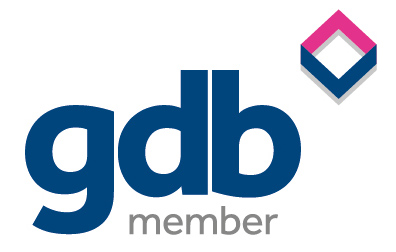Harvey John
Unit 2 Ferry Wharf
Hove Enterprise Centre
Basin Road North
Portslade, East Sussex
BN41 1BD
More people now look for flexible working when applying for a new job.
Hybrid working has been the employment buzzword over the last year.
As lockdowns eased and people re-emerged from the great working at home experiment, the assumption was that a mix of home/remote and office working would be the new normal.
Yet, with vaccine coverage increasing by the day, some companies are pulling back from the idea of hybrid working. Forget the new normal, there are plenty of employers who are ready to return to the old established routines. The experiment is over – get back to your office workstation!
The thinking is, if the office is now safer, why is there a need to change the traditional, tried and tested work patterns?
The ‘old normal’ employers may be in for a shock.
Although their business model hasn’t changed, their employees have. People have successfully worked from home – and they have seen the advantages. They have seen there are other ways of working, and have become less forgiving of those businesses who deny work flexibility.
The problem for inflexible employers is compounded by the fact that we are operating in a market where businesses are competing for the best talent.
Inflexible employers are facing the prospect of unfilled job vacancies – and even resignations.
A return to the 5-day office week?
Predictions of a full-time return to the office have been amplified over recent weeks, often from those who have vested interests. Busy offices are essential for certain sectors. Empty city centres are devastating for commercial property agents, co-working venues, shops, bars and restaurants.
The Centre for Cities think tank told the BBC that the five-day office week could become the norm again within two years.
Director of policy and research Paul Swinney supported this view with the observation that: “One of the benefits of being in the office is having interactions with other people, coming up with new ideas and sharing information.”
“Over the longer term, I’m quite hopeful that we will see people return five days a week.”
Are these these calls more wishful thinking than reality? Swinney’s use of the word ‘hopeful’ is revealing.
Of course, it isn’t just city advocates who want a return to the old ways. Even usually forward thinking companies such as Apple relish an end of remote working. The company requires teams that require “in-person” work to return for four or five days from September.
In a memo to staff in June 2021, Apple CEO, Tim Cook said: “I know I’m not alone in missing the hum of activity, the energy, creativity and collaboration of our in-person meetings and the sense of community we’ve all built.
The hybrid working advocates
Other businesses phasing in a full return to the office include EY and Goldman Sachs. But these may be outliers.
There have been notable examples of global businesses who are embracing the hybrid revolution, as these quotes attest:
- Alan Jope, Chief Executive, Unilever: “We anticipate never going back to five days a week in the office. That seems very old-fashioned now.”
- Brent Hyder, Chief People Officer, Salesforce: “We’re not going back to the way things were.”
- Joe Garner, Chief Executive, Nationwide: “We are putting our employees in control of where they work from, inviting them to ‘locate for their day’ depending on what they need to achieve.”
- Kevin Ellis, Chairman PwC: “We’ve long promoted flexible working, and [will] make it much more the norm rather than the exception. We want our people to feel trusted and empowered. We want to help enshrine new working patterns so they outlast the pandemic.”
- Matt Sinnott, People and Property Director, Lloyds Banking Group: “Home, hybrid or hub will be our mantra. That’s how we think we will be able to [allow] people to operate most effectively.”
Why are businesses embracing hybrid work models?
The simple answer is that it is what their employees want.
Lloyds’ mantra of home, hybrid or hub is a reflection of the fact that 80% of their staff who are currently working from home would like to continue to do so. Nine out of 10 Lloyds line managers think their teams have been equally or more productive while working in different ways over the past year.
A survey by Survation of more than 1,000 working adults in March showed that just 19% of people wanted to return to the office every day.
The businesses that ignore this demand for flexibility may find that employees push back. Apple’s edict to return to work met with an angry backlash. An internally distributed letter complained that: “Without the inclusivity that flexibility brings, many of us feel we have to choose between either a combination of our families, our wellbeing, and being empowered to do our best work, or being a part of Apple.”
Some Apple staffers have threatened to leave. And they not alone. A May survey of 1,000 U.S. adults showed that 39% would consider quitting if their employers weren’t flexible about remote work. Among millennials and Gen Z, that figure was 49%.
How to retain and recruit staff
The option of remote or hybrid working is not the only factor when it comes to staff retention but, in 2021, it is a question that more people are asking.
It is a challenge for employers as there is a lack of consensus on how people want to work. Some prefer the office, some prefer working from home.
The answer is to offer flexibility wherever possible. A hybrid work plan is by far the most popular option. There are tangible benefits in getting people together to spark innovation and to build a team, but total inflexibility is so 2019!
Ignoring an employee’s desire to have some control over when and where they work has become counter-productive. And replacing key employees is getting harder all the time.
—
Sandra McKinnon is Head of Operations at Harvey John.
If you would like to see our company updates and industry insights, follow our LinkedIn page here.
Search our latest accountancy jobs here.
Harvey John is a specialist Accountancy, Tax & Treasury, and Legal recruiter operating across the UK & EMEA market
Author

An MBA graduate, Sandra understands businesses and how the right team can impact long-term success. Sandra was our Head of Operations for 3.5 years leading to the development of our use of technology before transitioning into her current role as Head of Client Services in October 2024.
Sandra is responsible for driving new business acquisition, nurturing our valued customers and ensuring high levels of candidate and client satisfaction. Internally, Sandra works with the Board, Heads of Division, and the wider team to foster a culture of collaboration, cross-selling, and continuous improvement.
Available Jobs
Sorry, no jobs from this author. However, if you have tax, legal, finance or treasury experience, please upload your CV above and we will aim to get in touch.







